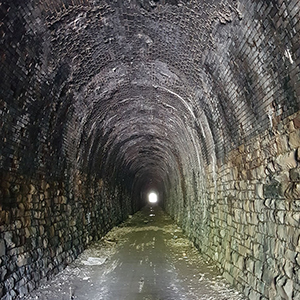Project Description
Bat Surveys
All British bats and their roosts are protected in by law. Clients often commission ESL to undertake assessments of structures and trees to check if these features contain any bat roost potential. This is usually driven by a change in use, such as demolition, building extensions/conversions or tree removal/management. Our licensed bat surveyors undertake these assessments, which are called Preliminary Roost Assessments (PRA).
Preliminary Roost Assessment (PRA)
This involves a licensed bat ecologist undertaking a daylight internal and external survey of a structures/trees potential to support roosting bats. The level of potential determines if further activity surveys are required.
We also work with qualified tree climbers to enable potential roost features to be further examined, as can be difficult to assess potential from ground level and quite often features can be downgraded, removing the requirement to undertake activity surveys.
Our licenced ecologists are also confirmed space trained to City and Guilds level, which permit us to inspect certain tunnels and culverts.
Activity Surveys
These are undertaken when a structure/tree has been identified as containing bat roost potential, further surveys are needed to determine if the potential is used, if in use for what purpose and by which species.
Activity surveys are undertaken around dawn and dusk to observe emergence and re-entry to a structure/tree. The number of surveys and surveyors depend upon the level of potential and the size of the structure, between one to three surveys are typical.
Habitat Surveys
These are undertaken when there is substantial loss of bat foraging habitat or connectivity of habitats, usually for larger schemes. Our ecologists design transect routes which are walked and surveyed around dusk and dawn over the active season. Static detectors are also deployed over several evenings, that record bat calls/passes to provide more data over the season. The data is analysed by our expert ecologists. Surveys provide information on how a site is used by bats and which species are present, which enables important features to be retained or enhanced.




Some bat surveys can only be undertaken at certain times of the year it’s important to plan ahead by getting ESL involved early in a scheme to avoid delays.
Where bat’s and their roost are found during the surveys, our ecologists will review the results and proposals to check if works can be undertaken in a way that avoids disturbance to bats and/or their roosts, where this is achievable, we design a precautionary method statement, which details the works and working methods.
Derogation licences – Where bats and/or their roosts are impacted then a derogation licence issued by the statutory government bodies; Natural England, Scottish Natural Heritage or Natural Resources Wales, will be required. Our expert ecologists design a mitigation and compensation strategy suitable for submission for a derogation licence, the licence acts as a legal document. Our highly experienced ecologists are at hand to advise and support Clients through at all stages of this process, this includes preparing licence applications to statutory conservation bodies and overseeing and implementing all mitigation works.
It is best practice to undertake works that affect roosting bats in April, September and October, depending upon the roost type. This can cause delays which need to be taken into account at the design stage.

